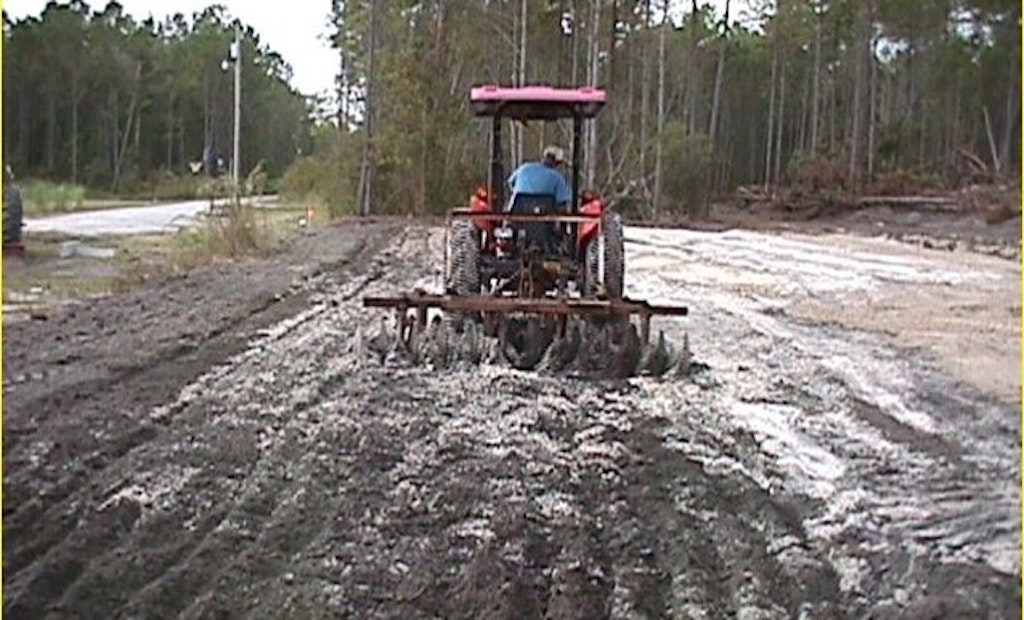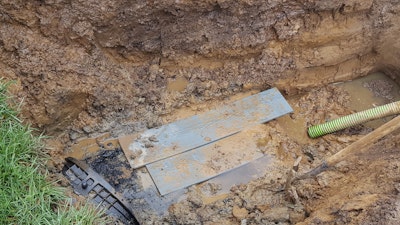
Interested in Education/Training?
Get Education/Training articles, news and videos right in your inbox! Sign up now.
Education/Training + Get AlertsWhen you are dealing with small lots, one option that may be considered is using the current location of a soil treatment area when the existing system is not compliant or may even be surfacing. This is a risky situation and should only be considered when no other options exist. There is no substitute for natural soil structure that has developed over thousands of years and is held in its characteristic shapes by organic matter, clays and/or iron. Avoidance of the disturbed area is the obvious and most cost-effective means of dealing with altered soils. This does not mean that modifications cannot work, but they may be more complicated, costly, and may increase maintenance and monitoring requirements. Natural, undisturbed soil is always a better option due to concerns outlined below.
- Disturbed soil: The location of the existing system was disturbed when the system was installed. Often the soil above an STA will have been compacted during construction or after by the property owner.
- Wet conditions and groundwater mounding: Due to the large amount of wastewater that has been applied to the area, a groundwater mound may have developed, raising the natural water table. Regardless of mounding, the STA will be very wet from application of wastewater (70,000-plus gallons from a typical residence). This raises concerns about smearing and compaction during future construction in the area.
- Biomat development: When the STA has been getting septic tank effluent via gravity distribution, a significant biomat will have formed if the system has been in place for some time. Even with pressure distribution a thin layer of biomat will have formed. This biomat could limit water movement if left in place.
Potential solutions
- Running percolation tests or another conductivity test across the proposed areas will determine the extent and severity of the disturbance on soil water movement affecting the soil-loading rate. The soil texture and soil structure should also be evaluated. The most conservative soil loading rate should be used from the combination of both techniques to size the new STA. Soil borings and water table monitoring in the area may indicate the extent of the groundwater mounding.
.jpg)
.jpg)
- Allow the STA to dry out. Depending on the season, year and the age of the system, this could take weeks or months. It can be sped up by opening one end of the system and allowing the system to drain into a trenched-out area where a pump truck can remove the wastewater.
.jpg)
- Excavate out the disturbed soil and biomat. This eliminates potential compaction and biomat, but oftentimes there has been disturbance to underlying natural soils as well. Over-excavating below the system may be needed as well. Here, caution must be used when determining the appropriate elevation of the system because simply removing the affected soil does not change the site soil-water conditions. Backfilling of the area must be completed with clean sand (mound sand). The system can then be designed and installed at the proposed elevations.
- Manipulate the soil above a deeper in-ground system and build the second STA above grade. Another option for mound sites when the only available location to place a new system is over the old is to place 6 inches of clean sand over the prepared native soil. The soil must be dry before this activity occurs. Incorporate the clean sand with the native soil by dragging the backhoe bucket teeth or deeply cultivating to create channels of clean sand, permitting water movement through the compacted soil.
There are numerous limitations to any of the above potential solutions. Be sure to consult with the local permitting authority. The system should be governed under an operating permit to evaluate performance over time.
About the author
Sara Heger, Ph.D., is an engineer, researcher and instructor in the Onsite Sewage Treatment Program in the Water Resources Center at the University of Minnesota. She presents at many local and national training events regarding the design, installation and management of septic systems and related research. Heger is education chair of the Minnesota Onsite Wastewater Association (MOWA) and the National Onsite Wastewater Recycling Association (NOWRA), and serves on the NSF International Committee on Wastewater Treatment Systems. Send her questions about septic system maintenance and operation by email to kim.peterson@colepublishing.com.






